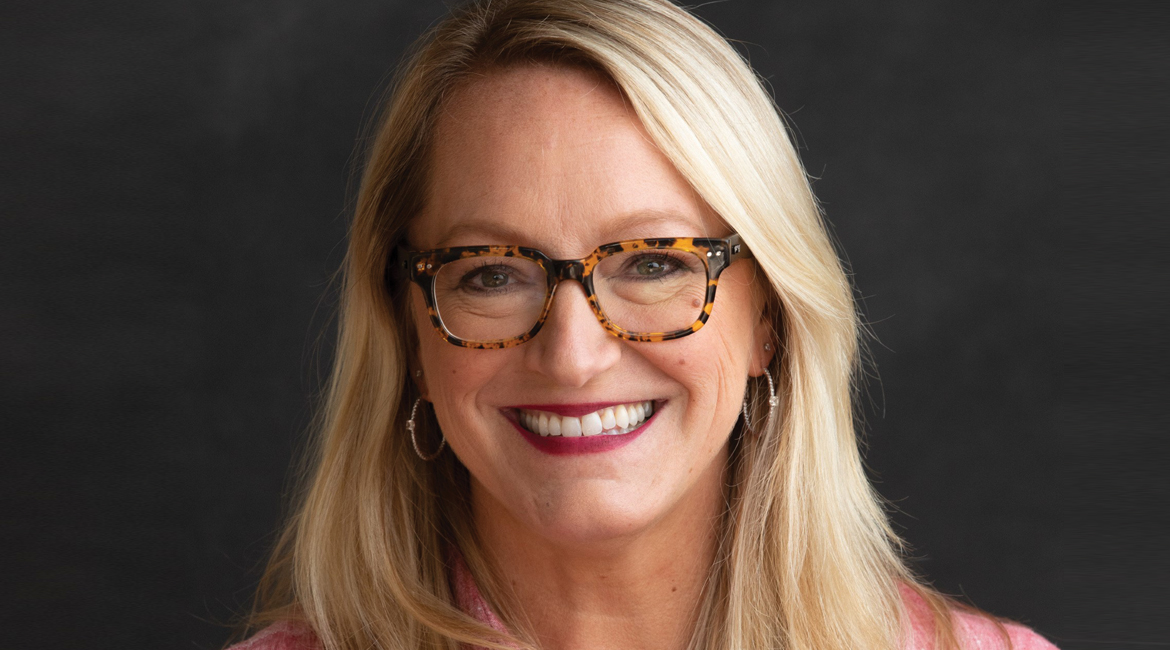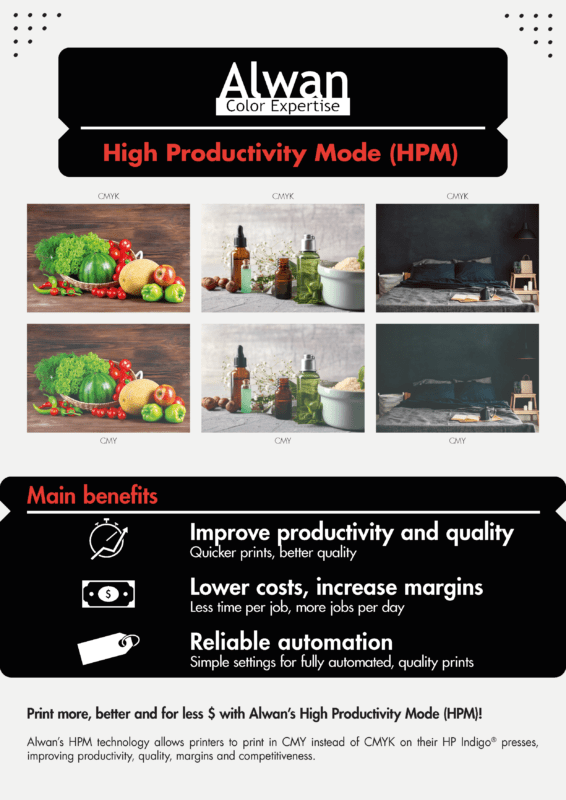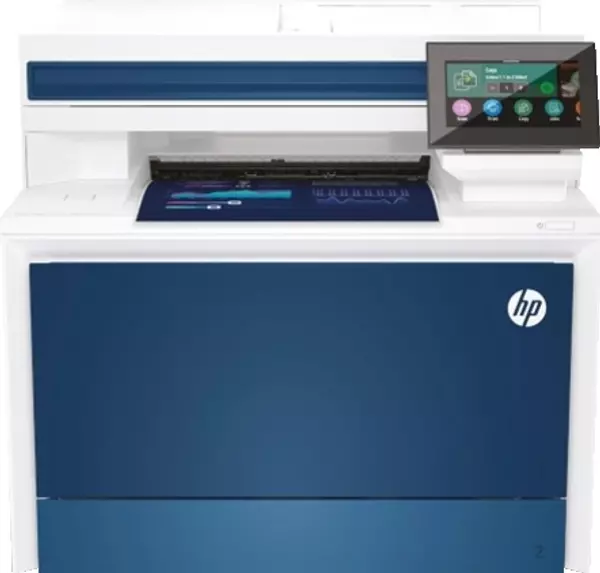Mentoring, sponsorship, and continuous learning are key drivers.
“I was an over-scheduled Gen-X child,” laughs newly promoted Senior Vice President of HP North America Anneliese Olson. After a try-everything childhood that expanded her horizons far beyond her Idaho hometown, she spent her college years in the bustling Bay Area of the mid-90s, getting a degree from Santa Clara University before landing back home in Idaho where HP is headquartered. She started her HP career in a role that could have been purpose-built for a young woman who wanted to learn as much as possible, serving as a market research analyst for HP’s Global Insights team, which had her contributing to projects in thirty different countries.
“As a young person in my first two years at HP, learning a little about a lot of things was really interesting to me,” recalled Olson. “The global lens was interesting, and the values of a global company really interested me, but I didn’t set out to stay for 28 years.”
And yet, when Olson needed to grow, she found that HP was a company that could grow with her. Rising steadily up the company’s ranks through the 2000s and 2010s, she even found the freedom to take a mid-career sabbatical, carving out an 18-month detour to “do some things that took time.” She studied environmental and social governance, a field that researches corporations’ material impact on the world and its people, served as an advisor to start-ups, and took up kite surfing. “I wasn’t retiring,” she said. “I always intended to continue because my making an impact is part of who I am.”
In 2023, Olson “boomeranged back” to HP, taking the SVP job and renewing her focus on something she’s always seen as one of the company’s strengths: diversity. “Even in the early days of my career, HP was a place that was always an inclusive and diverse culture, and also a learning one. It wasn’t stagnant.” She proudly recalled the time in 2015 when HP separated into two companies, Hewlett Packard Enterprise (HPE) and HP Inc., and both boards made it clear that they prioritized diversity from the top down.
Anneliese Olson on Being a Leader
“Being a leader comes with the responsibility of knowing that we’re serving diverse customers, and we work with and employ people in diverse communities,” said Olson. “We know that the more diverse companies are, the more they grow and innovate and drive more profit.” She sees hiring as something that must start with building a diverse slate, even if—especially if—that seems difficult at first. “People will debate, ‘gosh, the higher you go, it’s harder to pipeline!’ You bet it is, but go take the time and find the talent,” she said. “When you live and breathe it—not that we’re perfect by any means—but it becomes part of the general fabric, part of the culture.”
It’s also important to regularly evaluate and update the messaging of diversity outreach. In the 2010s, Olson recalls, much advice for women in business was still focused on “Dress for Success,” a concept from the 80s that had run its course. “It just felt a little bit out of date. It wasn’t for anyone’s lack of trying, but there’s a modern lens here.”
She was working in Singapore at the time, a modern, extremely diverse culture with a significant impact in the region. “How do we make sure what we do is relevant now? We went out and talked to the constituents, both men and women throughout the business, and put together a more modern agenda,” said Olson. She investigated how women advocated for themselves and how they asked for mentors. She saw needs that really should be met by two different roles: mentors and sponsors.
Mentors, Olson explained, are people whom a worker can reach out to for advice, people who serve as sounding boards. Peers can be mentors and often are. Sponsors, on the other hand, can most help when they’re at least one or two levels above the employee in question, outside the management chain.
“I realized that sponsors speak even louder than mentors,” observed Olson. “They serve different purposes. How do you build the kinds of relationships where you have advocates for yourself that are not just your own chain of command, others that can speak for you when you’re not in the room?”
Anneliese Olson on HP’s Diversity Initiatives
While many companies claim to prioritize diversity, at HP, the numbers bear this out. According to the company’s 2022 Sustainable Impact Report, 33% of HP’s employees are director level or above, and 40% of the executives reporting directly to the CEO are women. Forty-six percent of the board of directors are women, and 46% are racial or ethnic minorities.
Representation of women and minorities in technical roles has shown steady growth in recent years, and the company aims to double the number of Black and African American executives by 2025. This has been part of the corporate character of HP since long before Olson started, she said, with the first employee resource groups for empowering historically disenfranchised demographics forming in the late Seventies.
“This isn’t a COVID thing, this isn’t one external event driving behavior,” said Olson. “We have made publicly stated goals as a company. There may be event-driven metrics, but there is a pipeline effect. For women in STEM, you don’t just talk to young women in university and high school, but actually at critical times at the end of elementary and middle school, where data say girls drop out of math and science.”
Olson credits HP’s Chief Executive Officer Enrique Lores, for keeping the company’s commitment to diversity and inclusion at the forefront. As a founding member of CEO Action for Racial Equity, a group that advocates for public policy initiatives that advance racial equity, he’s taken leadership steps to support programs such as HP’s Racial Equality and Social Justice Task Force. In 2022, the Task Force implemented workforce diversity requirements for more than 30 of HP’s top suppliers, requiring quarterly reporting on worker demographics, and built the Diversity Network Program, a tool to help partners find businesses owned by people of color.
“Our CEO is constantly learning and listening himself,” said Olson. “We all bring our perspective to the table. If you can be open and listen to others and learn, that helps quite a bit.”
Of course, progress doesn’t stop at hiring. How does a company make sure people feel included once they’re inside? In addition to employee resource groups, now known as Business Impact Networks within HP, Olson encourages formal and informal mentoring, including something HP implements called “reverse mentoring,” where early or mid-career employees connect with higher-level executives, helping them learn from each other.
“We had a select group of talent, individual contributors and first-level managers, Black and African American employees who were partnered with senior leaders,” she said. “We were back and forth, having this two-way dialogue. It wasn’t just ‘let me share my insights,’ but also them sharing with me about their experiences, what was working, what was not working.” The key for Olson was that these weren’t rote responses, but rather individual, personalized connections that can inform not just the next promotion but moves three or even five years down the line.
Ultimately, the door to progress opens when a company asks itself one question: If people look up, do they see people who look like them?





